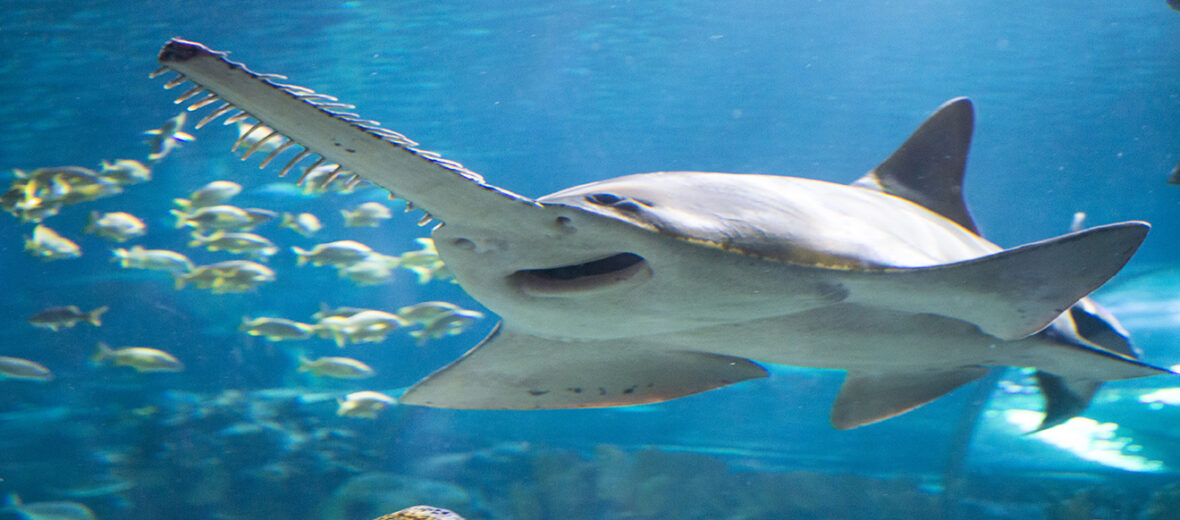
With their elongated, flattened snout that looks more like a hedge trimmer than a feature you’d find on a fish or shark, the sawfish is truly unique. There are 5 known species of sawfish in oceans off the coasts of Australia, Japan, and South Africa. Besides the ocean, they can also be found in brackish estuarine waters, as well as freshwater lakes and rivers. The IUCN lists the various species as Vulnerable, Endangered, or Critically Endangered. This is due to overfishing, pollution, habitat loss, climate change, and bycatch (getting caught in nets and long lines).
First the Stats…
Scientific name: Pristidae
Weight: Up to 720 lbs.
Length: Up to 23 feet
Lifespan: Up to 30 years
Now on to the Facts!
1.) These amazing fish are covered with placoid scales (called dermal denticles) with pointed tops. This gives them a rough texture, when handled.
2.) Their snout (rostrum) is lined with a row of sharp scales on each side. Yes, that’s right, those are modified scales on their nose; not teeth. Their actual teeth are in their mouth, like other sharks.
3.) A pair of barbels (called ampullae of Lorenzini) are located in the middle of their snout. These are used as a sensory organ that aids in the detection of prey. These barbels have electroreceptors that pick up subtle movements made by prey.
4.) Sawfish have between 5 – 6 gills, depending on the species.
5.) External claspers located on the underside of the body, near the caudal fin, are how you can tell males from females.
But wait, there’s more on the sawfish!
6.) As you no doubt guessed, sawffish are related to sharks, rays, and skates.
7.) How do they do it? How do they hunt? Simple. They slash their heads back and forth to eviscerate their prey and then gobble up the torn up bits of flesh.
Did you know…?
No recorded instances of a sawfish attack on humans has been documented. They typically steer clear of places where humans inhabit.
8.) Females are ovoviviparous (the young start off in eggs. The eggs develop inside the mother, fed by a yolk sac), and the young are born live.
9.) Gestation (preganancy) can last up to a year, in some species.
10.) They prey on fish, crustaceans, and squid.
But wait, there’s still more on the sawfish!
11.) When the young are born, their “snout teeth” are folded inward to prevent injury to mom.
Did you know…?
These fish can slice and dice with their snout so quickly that they can literally slice their prey in half.
12.) Sawfish have been documented using their rostrum (snout) to disturb sediment and stir up crustaceans hiding in the substrate.
13.) They have been around for around 50 million years!
14.) Even though they typically reproduce via fertilization, they have also been documented reproducing via parthenogenesis (reproduction without fertilization from a male).
Now a Short Sawfish Video!
Also, check out the Critter Science YouTube channel. Videos added frequently!
Want to suggest a critter for me to write about? Let me know here.




Leave a Reply